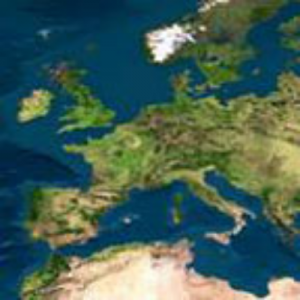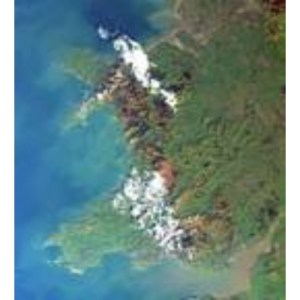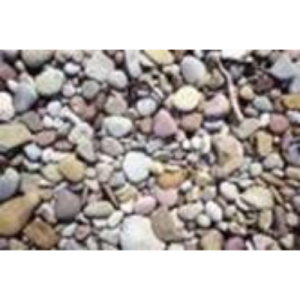Classroom
For Teachers and Educators of Art, Math and Special Education (K-12)
Fractiles-7 challenges, but does not frustrate.
Not too easy, not too hard – the versatile and elegant geometry of Fractiles-7 allows almost anyone to create endless varieties of imaginative and beautiful designs, ranging from simple to complex. With 192 magnetic tiles and a 12″x12″ steel board, the Large-size Fractiles-7 is perfect for focus groups. And unlike pattern blocks, these magnetic tiles stay put, an especially helpful feature for students with fine motor skill problems.
Teacher Video Introduction to Fractiles-7 on YouTube.
Fractiles-7 facilitates an intuitive grasp of spatial relationships and invites deeper exploration.
Regular use of Fractiles-7 increases visual perceptual skills and visual analysis skills.
From Dr. Jerome Rosner’s guide for parents and teachers “Helping Children Overcome Learning Difficulties”, Walker Publishing Company, 1993:
“Visual perceptual skills and visual analysis skills are critical to mastering Arithmetic and Mathematics. The child who does not appreciate spatial relationships (whose visual analysis skills are deficient) or who lacks the ability to use spatial analysis strategies will have to resort to keeping the (math) problem in memory in its entirety, then organizing it into a solvable problem – a very difficult task indeed.”
Simply stated, satisfactory progress in arithmetic depends upon the adequate development of visual perceptual skills. If a child’s visual analysis skills are not properly developed, learning difficulties are inevitable. Arithmetic cannot be mastered through memorization.
As a youngster begins to acquire better visual perceptual and analysis skills, she begins to exercise these skills in different situations. Signs of progress include:
• Better scores on T.V.A.S. (Test of Visual Analysis Skills).
• Printing and writing improvement.
• Better organized papers.
• Demonstration of a more orderly approach to day-to-day situations – such as better organizing of time and efforts, noticing of things that facilitate learning, and so on.
Dr. Rosner states that visual perceptual skills are strongly linked to learning to read and write. Improving visual analysis skills enables students to respond better to instructional programs.
Of course, Fractiles-7 does not take the place of lessons, but your students may become more teachable by playing regularly with Fractiles-7.
” “
TEACHER TESTIMONIALS
“In the classroom we use Fractiles for occupational therapy and as a calming break choice. The concentration really helps our students, and they love the sense of accomplishment when done.”
– Susanne Frey, SWD Para Educator, Kettle Moraine Middle School, Wales, WI
“We use Fractiles-7 to create tessellated designs as part of creating a fraction problem set. The kids use Fractiles to create a blank tessellation design, then create fraction problems in which they are then cued to the answer inside the tessellation. Each answer corresponds to a color”
– Emily Miller Mlcak, Head Teacher Upper Elementary, Touchstone Community School, Grafton, MA
“I use Fractiles in my classroom as an outlet for creativity. It is among the choices awaiting students who have earned ‘free time.’ The responses have been very positive! The students are at ease with the format and welcome the chance to match the designs on the folder and/or stake out their own artistic territories. I have been delighted to observe two or more students working together in a cooperative manner!
Some of them would have loved to see their creations preserved for eternity in a museum! Eventually they conceded the need to yield the board and the pieces to another student knowing that they’ll have another go at it when they earn the time!”
– Gene Silver, Teacher, Kellogg Middle School, Portland, OR
“My first graders are learning about shapes in our math class and using Fractiles-7 is a complimentary activity which they thoroughly enjoy. It’s so popular that we have a sign up for equal turns!”
– Marilyn Bowker, First Grade Teacher Willett Elementary School, Davis, CA
“I find my students are captivated by Fractiles-7. Their sense of pride and accomplishment is immense when they show me what they have created. It makes them feel extra special about math. What a motivator! Fractiles is a terrific training aide that disguises learning as fun. It is reasonable to predict that Fractiles will remain a staple in my curriculum.”
– Bob Curry, Elementary School Teacher The Learning Adventure School, San Diego, CA
“My 8th grade students are fascinated with Fractiles and enjoy making designs with them. Fractiles is especially applicable because we are studying geometric shapes and their relationships. I know they will be useful for a long time.”
– Juanita Smith-Nakao, 8th Grade Math Teacher James Curran Middle School, Bakersfield, CA
“My students love Fractiles!”
– Patricia Hardwick, 4th Grade Teacher Zilker Elementary School, Austin, TX
“My 7th and 8th graders live for free time so that they can play with Fractiles.”
– Sandra Bullard, Teacher, The Prentice School “Where children with dyslexia learn to learn”
“Fractiles-7 is a tremendous addition to my grade 2 Math and Design Program – plus the students love them!”
– Sydney Tyler-Parker, Cabrillo Elementary School, Pacifica, CA
“For the past several years, my wife and I have featured Fractiles in workshops we do with public school students. We have been following the currently popular STEM philosophy of combining Science, Technology, Engineering, and Mathematics to get kids interested in how to teach themselves and learn independently, with really promising results.”
“Fractiles is ideally suited to this kind of program and extremely popular with our students as it encourages creativity and innovation. We wish there were other materials of a similarly versatile and compelling nature.”
– Professor John L. Hall, University of Colorado, Boulder, Nobel Prize for Physics, 2005
[Read more about Fractiles and STEM]
“What I did with Fractiles turned out to be really neat and I was very pleased. My classes consist of students from entirely different communities who come together once a month. Two classes at a time, usually an urban multicultural group paired with a suburban group with much less diversity. What I did was to give pairs of kids from the partner schools one board and a set of Fractiles, and ask them to make symmetrical designs, since the theme for the program is symmetry. This worked beautifully! They loved the materials and they had to interact and to talk to each other. The Fractiles were a great medium, and the kids were proud of their designs. Some made figural designs like Transformers, and many made kaleidoscopic designs. This is an idea that could be used anywhere as an icebreaker, although it was not the first time they had met.”
– Margie Lord, Professional and Career Services Director
LEARN, Regional Educational Service Center (RESC)
Serving 24 school districts in Connecticut.
“Fractiles has been a great addition to our 5th grade Curriculum ‘Measuring Polygons: 2D Geometry and Measurement’. It is a great connection for the kids! There is also a section in our unit in which they measure the angles of the shapes based on other shapes they already know. The kids thoroughly enjoyed being able to show their work on the Fractiles board instead of having to draw the shapes out. I also found the board to be very useful when I had students with questions. It gave me the flexibility to walk around to tables and demonstrate as the kids worked because the pieces are magnetic and don’t fall off the board.”
“The Games and Lesson Plans packet was very helpful when planning for class and I was able to use them to challenge my higher thinkers as well as to design further lessons which made the learning even more exciting and enjoyable for the kids”.
“The students in my class also enjoyed having the board out ‘just for fun’. They have spent hours making designs in class and sharing them with each other. I even heard a student comment ‘This is the best thing ever, and I can’t wait to get home so my mom can buy me one”.
“Thank you again. It has been a great addition to my classroom. I would certainly recommend Fractiles to any classroom teacher to use with curriculum or just for fun.”
– Sara Stites, 5th Grade Teacher, Ralston Elementary School, Golden, Colorado
Encourages creativity and thinking skills!
Posted 02/25/2005 by Sarah Wilson
Rating: ![]()
“One of my 4th grade students was enjoying the Fractiles so much, it inspired me to purchase a set for each of my two 7-year-old nephews! The magnetic board is a great asset and the product encourages creativity and thinking skills.”
“My first graders are learning about shapes in our math class and using Fractiles-7 is a complimentary activity which they thoroughly enjoy. It’s so popular that we have a sign up for equal turns!”
– Marilyn Bowker, First Grade Teacher Willett Elementary School, Davis, CA
“I find my students are captivated by Fractiles-7.
Their sense of pride and accomplishment is immense when they show me what they have created. It makes them feel extra special about math. What a motivator! Fractiles is a terrific training aide that disguises learning as fun. It is reasonable to predict that Fractiles will remain a staple
in my curriculum.”
– Bob Curry, Elementary School Teacher The Learning Adventure School, San Diego, CA
“My 8th grade students are fascinated with Fractiles and enjoy making designs with them. Fractiles is especially applicable because we are studying geometric shapes and their relationships. I know they will be useful for a long time.”
– Juanita Smith-Nakao, 8th
Grade Math Teacher James Curran Middle School, Bakersfield, CA
“My students love Fractiles!”
– Patricia Hardwick, 4th Grade Teacher Zilker Elementary School, Austin, TX
“My 7th and 8th graders live for free time so that they can play with Fractiles.”
– Sandra Bullard, Teacher, The Prentice School “Where children with dyslexia learn to learn”
GAMES AND LESSON PLANS
Games and Lesson Plans (downlable PDF)
Included in the Games and Lesson Plans are:
• Mirror Your Friend Game
• Symmetry Groups
• Making Small Circles
• Star Making
• Four Plus Stars Game
” “
Fractals and Fractiles
The name Fractiles is a combination of the word “fractal”, meaning the phenomenon of scaling or the repeating of a pattern on every scale – and the word “tiles”.
“Fractal” is a relatively new word, yet it describes something which we recognize intuitively. Fractal refers to a geometric shape that is complex and detailed, yet similar at any level of magnification. Examples include a rugged coastline which when seen from space becomes ever more complex as the viewer moves closer. Coastlines turn into rugged boulders, then into sand, and then finally into sub-atomic particles. Yet at every level of magnification the pattern is similar.


Mathematician Benoit Mandelbrot called those shapes “fractals”. He also wrote that fractals are “self-similar” meaning that each portion of a fractal can be viewed as a smaller replica of the whole. If you look closely at a fern, for example, you will see the same pattern reproduced at every level. The leaves seem to be made up of miniature ferns – repeating the shape of the whole in ever decreasing sizes.
We live in a fractal Universe. Our Sun is just one star among billions of stars which make up our Milky Way Galaxy. The Milky Way Galaxy is merely a tiny part of a super galaxy (a galaxy made of galaxies). In the vast expanse of celestial space, a super galaxy is but a tiny replicated part of a super-super galaxy, ad infinitum.


Similarly, when we zoom in on the world of sub-atomic particles, we find that it is composed of endlessly smaller structures within structures, all of which have similarity of pattern. There is no known limit to how large or small fractals can be. We humans are somewhere on an endless continuum.
Some call the similarity of pattern which exists everywhere from the infinitesimal to the unimaginably vast – the “fingerprint of God”.


The spiritual insight that the Universe is a fractal transforms this earthly world into one of splendour and mutual fusion.
To see the World in a grain of Sand
And Heaven in a wild Flower
Hold Infinity in the palm of your hand
And Eternity in an hour.
-William Blake
” “
SEND IN YOUR IDEAS AND STORIES
If you successfully use Fractiles in the classroom, if you have a story about how Fractiles has fostered learning, if you have a reference to a book or magazine article that discusses subjects related to Fractiles such as tessellations or seven-fold symmetry, please send us an email with your ideas or your story to and we’ll post it as part of what this site offers.

21 Piece Circles

